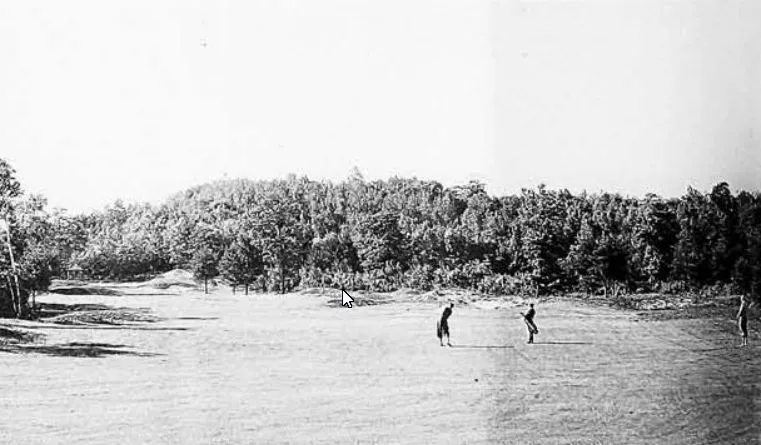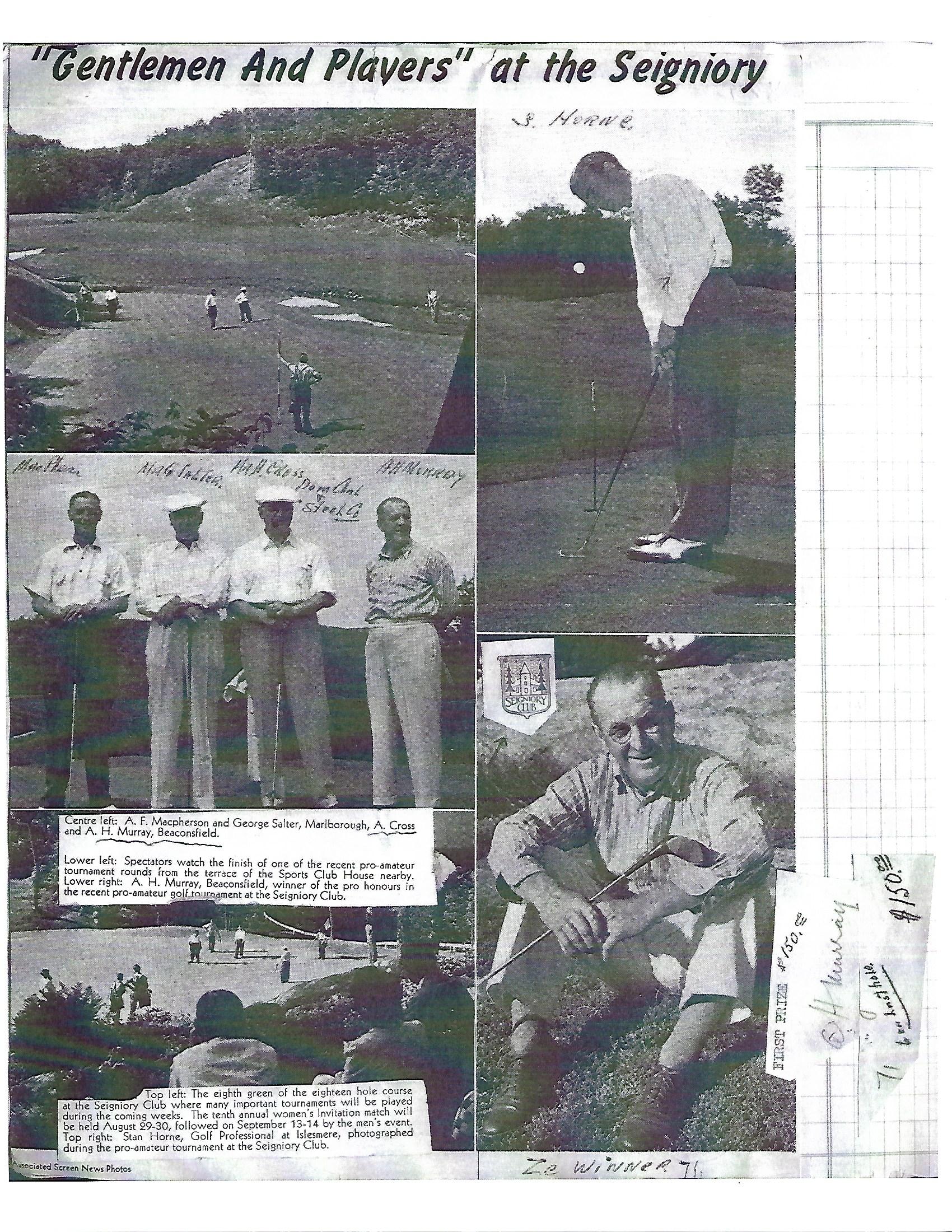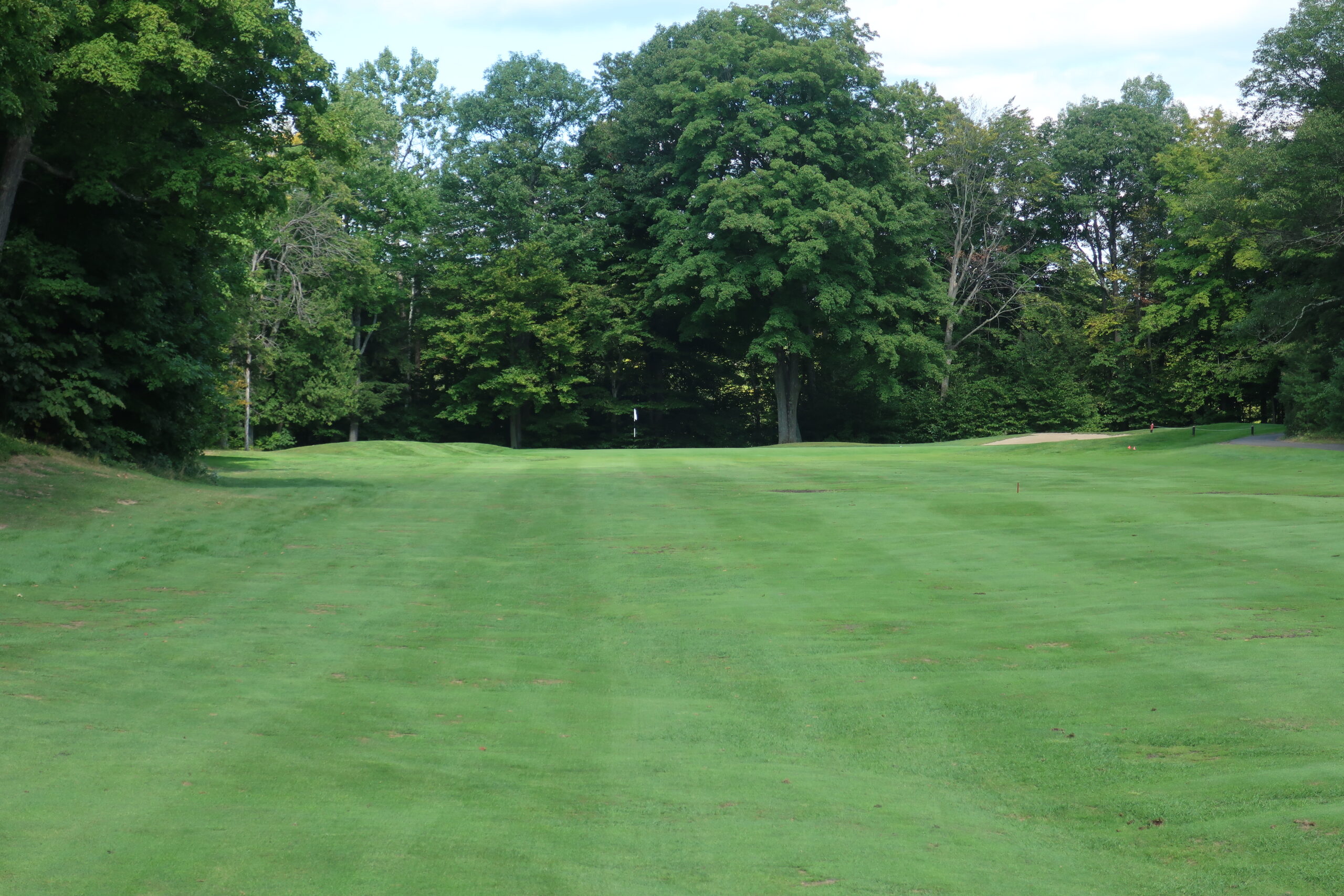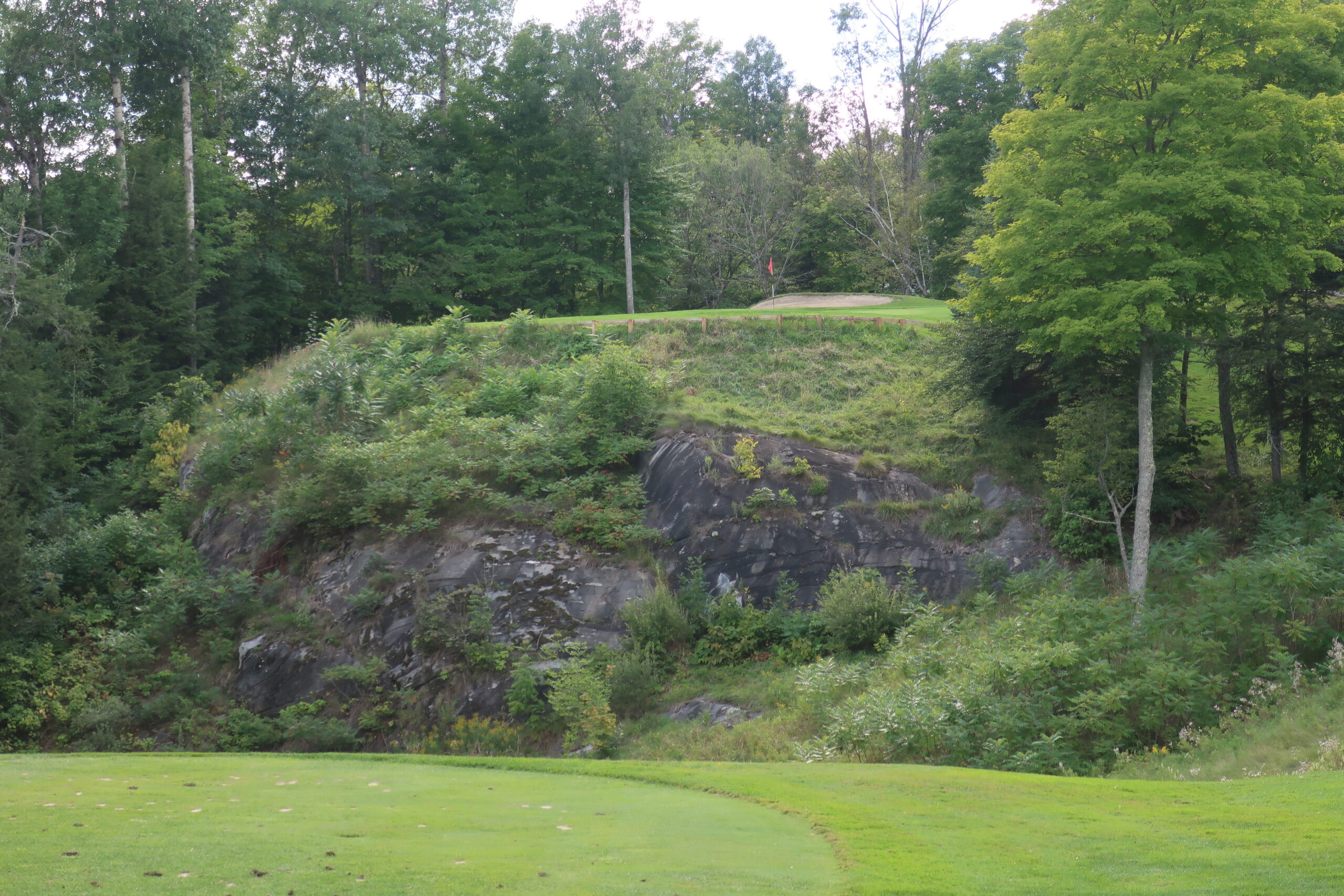Upon receiving the final tally of Beyond The Contour’s 2022-2023 Top 100 Golf Courses in Canada, I was rather disappointed, even downright perturbed, to see that my beloved Chateau Montebello (originally named the “Seigniory Club” until the early 1970s) had failed to make the cut—though it did end up ranked 108th, which, I guess, is still pretty good, all things considered.
I wondered how anyone could think it is not wonderful? How could they not look beyond the dilapidation? Where else in Canada can you find holes such as the 2nd, 4th, 8th, 11th, 12th, and the 15th?
If fully restored, the course would be Top 20 in the country and the 6th best in his [Stanley Thompson’s] portfolio.
-Ian Andrew




Over the years, having grown up and remained in the Ottawa area, only a short drive from Montebello, I’ve routinely had to assume the role of unofficial guardian, protector, and apologist for the club, zealously defending its honour while praising its merits to the litany of golfers who have approached me with unsavoury opinions concerning, among other things, its poor conditioning, sylvan overgrowth, extreme greens, and downright awful 9th hole (more on this later). I must admit, however, that all of their complaints stand upon somewhat meritorious legs; even though I’m dearly fond of the place, I am not blind to its flaws and current managerial shortcomings.

Out of obligation (an obligation to whom…well, I don’t know), I try to visit at least once a year, usually as early in the morning as possible, so as to avoid the score of jean-panted, shirt-untucked, beer-drinking, recklessly driving golfers who congest the course by mid-morning on a daily basis. Playing this early—the merits of which I believe I don’t have to enunciate here—you might even get lucky enough to find a raked bunker. Unfortunately, I am only somewhat exaggerating.
The whole operation of the club is, I’ll just politely say, un-Memphremagogian: the pro shop is ill-stocked with unsavoury clothes and hats and memorabilia; the scorecard tastelessly logo’d with sponsors; the website out of date and lacking information; the range a disaster; and the employees only concerned with herding the most golfers down the first fairway as possible.


Its dishevelled and unkempt nature makes little sense considering its deep-pocketed owner, and the fine manner in which they keep and manage some of their other golf courses. Furthermore, the historic hotel across the road is first-rate, which merely increases my perplexity regarding their laissez-faire attitude towards the golf course.
I am always reminded of a scene in Morley Callaghan’s The Varsity Story as I do 45 KM/H along the winding entrance, eye the stately Tudor-style homes enveloped by trees, tie my shoes in the gravel parking lot, shoulder my Mackenzie bag, and make my way towards the first teeing area. In the scene that comes to mind, the main character of Callaghan’s novel is walking across the football field of the University of Toronto’s Bloor Stadium and claims that he can sense “ghosts”. So while I roll a handful of practice putts on the green near the first tee, gaze at the historic carved wood map showcasing the routing of the course, marvel at the lithe morning dew faintly darkening the rim of my Footjoys, and perhaps inhale a whiff of some kind of breakfast food emanating from the stately stone and wood clubhouse overlooking the nearby 18th green, I can vividly imagine long-dress clad ladies and tweed-suited gentlemen knocking hickory-shafted mashies and niblicks towards the final green, under the gaze of a similarly bedizened crowd passing a loafy morning on the patio right behind it. My ability to access such idle daydreams, undoubtedly, has largely to do with the depleted, antique condition of the place, which feels like a true throwback to a by-gone era of golf and society.
In a strange way, I am glad I’ve had the chance to play it as often as I have before it goes under the knife of an architectural surgeon – if it ever does, which is a loaded question—so that I can experience and fully appreciate its transformation first-hand. To quote the Prince in 1 Henry IV: “And, like bright metal on a sullen ground, / My reformation, glitt’ring o’er my fault, / Shall show more goodly and attract more eyes / Than that which hath no foil to set it off.”
In fact, a knowledgeable course operator from the area once told me that the course is beyond repair; seeking professional confirmation of this distressing claim (which I didn’t necessarily believe) I reached out to Ian Andrew, who has restored a number of Thompson’s courses, and he assured me that “it can be restored. Nothing is unsalvageable. It comes down to desire and cost. I even have the grading plans for the course and a number of amazing images. Aerials are available. You could put it back completely, note for note, if there was a desire to rebuild greens and bunkers again.”
If fully-restored, Andrew believes that the course “would be Top 20 in the country and the 6th best course in his (Thompson’s) portfolio. Holes like the 6th would get everyone’s attention because of the bunkering, but people would enjoy the changes of pace, with other holes being far more about the land. Give me one more Thompson to put back in its entirety and this would be the one”.
After all, the course, which was lavishly bankrolled by the C.P.R., and the private until the early 1970s, was once considered Thompson’s sixth-best design, behind only his “big five” of Jasper, Banff, Capilano, Highlands Links, and St George’s.





Ian related to me that although “the topography is impressive, even occasionally severe, the routing manages to handle the terrain surprisingly well. The course relies more on terrain than the bunkering. In the fall, this would be the most spectacular settings of all his works because of the trees and the brilliant colour.” The holes I immediately thought of when reading his answer were the 1st, 2nd, 5th, and 15th.
The severe nature of the property is immediately apparent from the 1st tee, off which merely a sliver of fairway is visible between two rocky outcrops; thankfully, though, you can get away with hitting less than driver here. Although perhaps not the “best” or “strongest” introductory hole in his repertoire, this is probably the most memorable one Thompson built (And yes, I see you getting ready to direct me to the original routing of Banff, but it ain’t getting switched back anytime soon, so miss me with that mention).


The rugged nature of the property is equally apparent on the long par 4, 2nd, which features a wild, quasi-hog’s back fairway that requires you to flirt with the sharp fall off to the left to get a better angle into the narrow, rightward canted green set against another outcrop, maliciously waiting to ricochet slightly pushed approaches into orbit, or across the river into Ontario, or right back at your forehead. The back to front tilt of the putting surface borders on absurd, to the point that it would be unplayable at speeds higher than about 7 on the Stimp-meter (which is not a concern currently). The second is far from the only green that is like this; in fact, there are a handful that feature no more than three or four possible hole placements, even at their current speeds, which contributes not only to their poor conditioning, but also to the awful pace of play. And for this you can thank the crew of architects who have renovated the course over the last seventy years, the last of which was John Watson in the late 1980s. His effort here—which included renovating the greens and digging holding ponds and navigating cart paths across fairways or merely a few feet from greens so that they become genuine hazards (no, seriously)—is nothing short of calamitous, up there with Graham Cooke’s work at Highland Links, Thomas Mcbroom’s at the Ottawa Hunt, and Rees Jones’ at the Royal Montreal in the pantheon of awfulness in this country.

Of late, there’s been some out-cry on Twitter, more specifically on “woke golf architecture twitter”, to return to such mid-century green speeds. I get the merits and some of the reasoning for doing so, two of which I mentioned in the previous paragraph, but after putting on about three or four of Montebello’s greens, I am usually begging, pleading to return to “country-club” greens, mentally chastising these radical reformists for wanting to condemn us to this kind of eternal putting punishment. Here, I believe I am speaking on behalf of all those among us who don’t particularly enjoy having to employ a full shoulder turn on putts over fifteen feet, or are cursed with the kind of Y— that get magnified tenfold when trying to survive (survive being the most-apt term for how I feel when putting) such snail-paced green speeds.

The 4th, a wildly downhill and sharply leftwards sweeping par 5, with a wide view of the Ottawa River and Gatineau Hills, provides the first, and most blatant, example of Watson’s battery on Thompson’s legacy. Imagine being a fly on the wall in the room when he proposed digging a pair of holding ponds in the fairway at the hundred yard marker, right where the vast majority of golfers would lay up. So now, unless you rope hook your tee ball (and because of the overgrowth to the left, you must really rope hook it!), or if you don’t possess the confidence to carry your approach some two hundred and twenty yards into a miniscule gap between two thickly forested slopes, you must lay back to about the hundred and fifty yard marker, thus castrating most into playing it with a driver, a wedge, and then another wedge. Oh and did I mention that the green is now shrunk to about fifteen paces in width.
Luckily, the 5th is genuinely brilliant (though not even the best par 4 on the course). This hole, more than any other I have yet seen in Thompson’s non-Cape Breton catalogue, brings to mind Highland Links, with the way that the fairway gently rises and bends to the right between two steep, wooded slopes. Similar to the mountainous stretch at Highlands Links, you get a sense of being overwhelmed, of feeling small, amidst the landscape. Rather than build up the green, Thompson simply draped it over the rumpled ground; if the turf wasn’t always soaked and muddy, I would love to try to run long irons into it, links-style. Regardless, this is my favourite approach on the course.

The stretch from the sixth to the eight—featuring a short drop shot par 3, a long uphill par 5, and a strategic drive and pitch par 4 (with a green, however, that is, and I cannot emphasize this enough, unplayable—Unplayable) – is a prime example of what made the “Toronto Terror” so brilliant, as is most of the back nine, particularly from the 10th to the genuinely all Canadian 15th. In truth, the back nine seems to be, at least to my unprofessional eye, in much better architectural shape than the front. Of course, the shrunken greens need renovating, the bunkers remodelling, and the trees pruning, but it’s mostly intact.


The ninth, however, merits a longer pause, for it is, in my estimation, the worst hole I have played in Canada. Here, once again, we can spare Thompson from criticism. Luckily, his original green is still maintained, and, although it is the far from the best par 3 on the course, it is still a decent, uphill, longish par 3, the kind that is all too rare in modern architecture. I’ll usually hit a second ball to it. Frankly, I’d omit playing to the monstrosity that is the current ninth green entirely, but I can’t divorce myself from trying to grind out a score every time I tee it up—I know I probably should, and have tried, and get that the game would be a lot more enjoyable this way, but I just can’t. That’s the best explanation I can provide.
I have not yet found documentation to pinpoint precisely who is responsible for perching the new boomerang-shaped green atop a fifty-foot-high rock wall, and who decided to tilt it so severely that a fence had to be erected around the front fridge to stop balls from rolling over said cliff, but I promise, dear reader, that I will continue to search for the culprit and publicly out him. Such a heinous crime deserves a public shaming. Fairmont should genuinely set up a camera behind the tee box and publish a compilation of 20-handicaps riffling their Taylormade RBZs and Pinnacles off the rock wall. I know I’d certainly watch it, half crying, half laughing.
In closing, rather than leave you on this sour note, I will instead direct you back to Ian’s belief in its untapped potential. Between the Muskokas and… heck… Cabot, is there a truly first class resort, combining both golf and leisure the way Montebello could if properly restored? Dear reader, let’s take a drive up the 401 from Toronto. Hop in, buckle up: Smuggler’s Glen (no)… Black Bear Ridge (no)… Mont-Tremblant (meh)… Owl’s Head (no)…Manoir Richelieu (no)… Fox Harb’r (probably could, but they selected Graham Cooke)….not exactly a murderer’s row. I think my sales pitch has been made.








